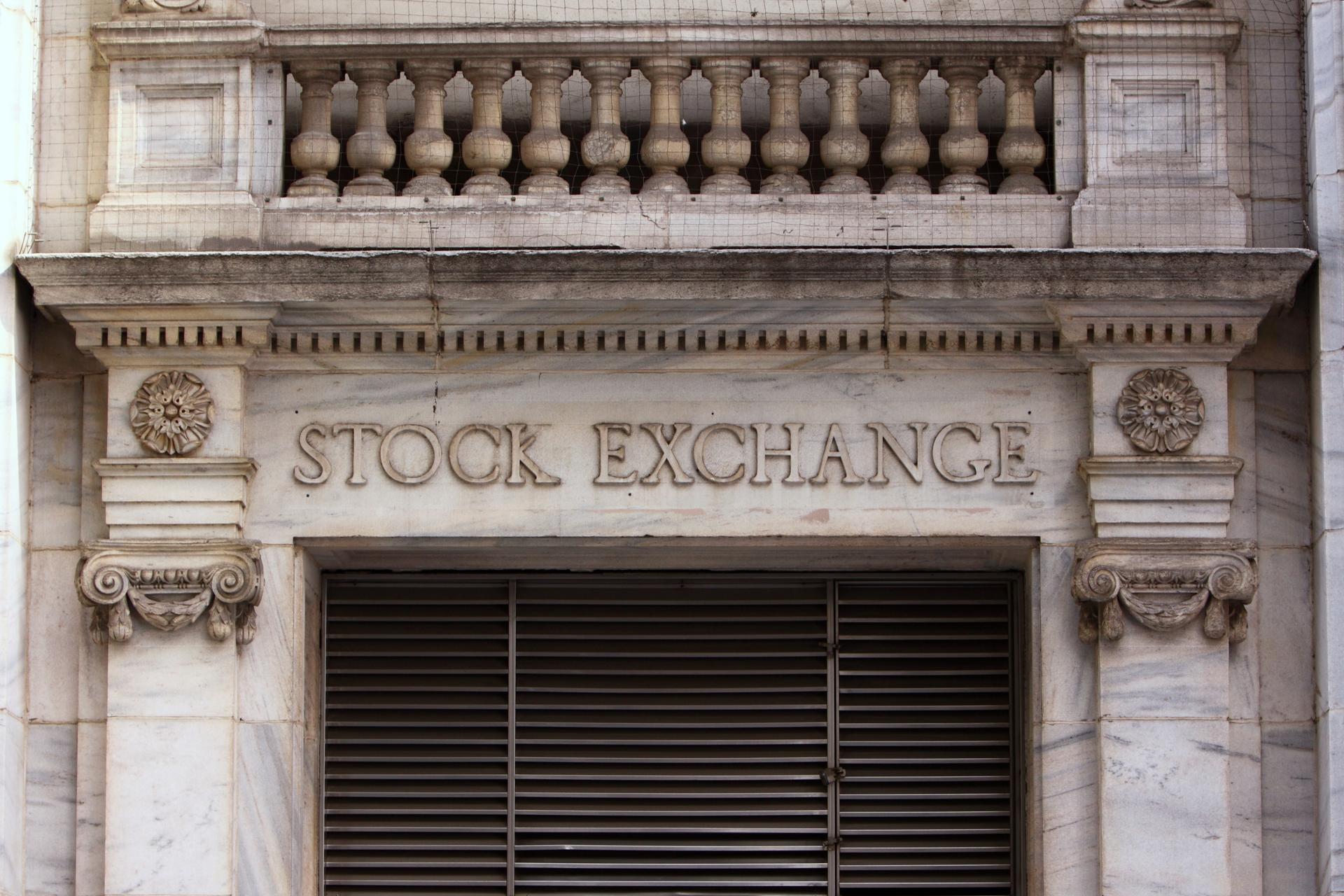
Vontobel’s Algorithms
Published on 15.05.2023 CEST
Innovation in Transaction Banking’s algorithm offering is driven not only by client demand, but also by an internal pool of ideas, expertise in algo trading, and ongoing research projects. Here we present two execution strategies that were recently added to our portfolios of algorithms: Trailing Stop and AUTO mode for the PACE algo strategy.
— Trailing Stop execution algorithm
Trailing Stop (TSTOP) is an execution algorithm with a built-in risk management tool that we offer to our clients. Its main purpose is to build up or exit from a position with fixed risk limits while at the same time opportunistically profiting from favorable price trends.
The algorithm continuously monitors market prices in order to define the stop level. When the price moves in a favorable direction, the stop price will adjust accordingly while at the same time preserving the user-defined trailing distance. In contrast, the stop price remains unchanged when the price moves to our disadvantage. An example of TSTOP execution of a sell order is presented in Chart 1. The order is not exposed to the market until the stop price is reached, after which point the order will be filled at the best-available price across multiple venues (lit, dark, periodics, and systematic internalisers) via the Vontobel smart order router.
With its intuitive and straightforward execution logic, the Trailing Stop algo offers clients a convenient way to ride favorable market conditions without having to monitor markets or manually adjust the order. Clients can profit from our latency-efficient infrastructure, which is used for stop-level adjustment, along with a wide pool of liquidity at various types of venues.
Until recently, Trailing Stop was mostly used internally, but now it is available to all of our clients through Vontobel’s Electronic Sales Trading and Global Execution desks as well as through the following electronic channels: TradingScreen (TradeSmart and QUO), BlackRock Aladdin, Bloomberg EMSX, MAX, and FIX.
— Optimal execution and the trailing distance
The crucial parameter of the algorithm is the trailing distance, which defines the client’s risk tolerance. Smaller trailing distances mean that the execution of the order will be affected by price fluctuations along the trend, especially on volatile markets. Looking at our earlier example (Chart 1), if the client had sent the same order at 20 bps trailing distance instead of 30, the order would have been executed much faster (12:38:27), but at a loss of 19.5 bps (see Chart 2).
Chart 1: Simulated example of the TSTOP execution of a sell order on Roche Holding AG with 30 bps trailing distance in rising market conditions.
Chart 2: Simulated example of suboptimal parameter selection for the TSTOP algo (sell order).
On the other hand, larger trailing distances mean that the algorithm will take longer to react to changes in trends. For instance, if the same order was sent with a trailing distance of 80 bps, the execution would be finished at 12:38:27 with a price improvement of 78.6 bps, which is half of the improvement with a trailing distance of 30 bps. Finally, larger trailing distances amplify the risks of adverse price movements, which go into effect when the order is sent to the market while it is going in an unfavorable direction or has no trend at the moment. Coming back to our example (Chart 2), if we sent the order with 80 bps trailing distance at 13:35:00, when the intraday trend has already reverted, it would have been executed twenty minutes later at a loss of 79.9 bps.
As a general rule, trailing stop distance should be determined based on the current market volatility and expected price trend (discretionary or systematic prediction of the future). The TSTOP algo is most useful when the expected trend goes in the opposite direction of the trade, that is, when sell orders are sent while the market is rising and buy orders are sent while the market is declining. In contrast, if the market price is expected to trend in the direction of the trade, more aggressive execution algos (such as SOR or a liquidity-seeking PACE algo) would be beneficial.
Chart 3: Determining the trailing distance of the TSTOP algo based on the market conditions.
The Trailing Stop algorithm (TSTOP algo) has a simple and a very intuitive logic behind it, and yet this example is a perfect illustration of a crucial aspect of the algorithmic brokerage business, namely, the importance of client choices on the algo parameters and the need to continuously educate clients on all aspects and specifics of each algo used.
The TSTOP algo is benchmarked against arrival price, but this is one of the cases when the algo does not have an intrinsic performance expectation and the slippage (average fill price relative to arrival price) is by and large determined by the current market conditions and the client’s instructions.
— Autopilot or manual gearbox?
Unfortunately, in algorithmic trading, there are generally no “one-size-fits-all” solutions. The set of parameters for optimal execution, the choice of the algorithms themselves, or even the decision to send an order via smart order router instead of spawning an algo all depend on a number of factors, starting from the current market and liquidity conditions all the way to the specifics and requirements for the order itself.
These choices place a burden (both technological and analytical) on clients, who now always need to keep their fingers on the pulse of instantaneous market liquidity and maintain an overview of the details of the engines under the algo hoods at a range of brokers. However, this burden is often unrelated to their main focus, such as management of their long-term portfolios or taking on an advisory role for their own clients.
At Vontobel Transaction Banking, we are putting considerable effort into reducing our clients exposure to unnecessary complexity, such as the number of parameters to be configured, and are instead letting the algos themselves choose the optimal parameters based on our proprietary portfolio of quantitative predictive models and trading signals. As the world moves toward self-driving electric vehicles, at Transaction Banking, we are working on developing the autopilot mode for our algos. At the same time, however, we will continue to offer the full range of tuning options to our clients who want to take the reins.
One example of these efforts is a first step that we have taken in this direction with a new AUTO mode for the PACE algorithm, which is currently in the beta testing phase for internal and external clients.
PACE AUTO is the latest addition to the four core modes of the PACE algorithm that define urgency as well as aggressivity: NOW, FAST, NORMAL, and PASSIVE. Each mode has a preconfigured set of rules for determining the completion price and the runaway participation rate. Whereas PACE NOW, the most aggressive mode, will take far-side touch plus up to three ticks in the initial sweep and later will participate at 50 percent of the public volume, PACE PASSIVE, the most conservative mode, will take far-side touch and participate in only 10 percent of the volume with a completion price of own-side touch.
«Unfortunately, in algorithmic trading, there are generally no “one-size-fits-all” solutions.»
Dr. Vladimir Filimonov
Head of Algorithmic Trading

— Toward the algo wheel – how should you train your machine?
Because it is too aggressive, PACE NOW would be too impatient for illiquid instruments, while PACE PASSIVE could miss out on opportunities in actively traded stocks. How can you choose the right mode in each situation ex ante? Intuitively, the decision should be motivated by analysis of the historical performance.
All four PACE modes generally outperform the VWAP benchmark in a broad range of market regimes and order sizes. As an example, in Q1 2022, the performance figures were +1.37 bps, +1.47 bps, +2.10 bps, and +2.45 bps for NOW, FAST, NORMAL, and PASSIVE, respectively.
However, the slippage (performance relative to the arrival price) is much more volatile and, moreover, it becomes increasingly dependent on the actual market conditions. As an inexhaustive list, these include immediate and historical spread, available liquidity in the order book, (tick) volatility of the stock, order size relative to the daily traded volume, presence or absence of short- or long-term trends at the moment of order submission, arrival time of the day, primary exchange, composition of alternative venues, etc.
Such a wide range of attributes (or “features”) would naively call for applying a machine-learning solution to the data of historical executions, especially since, nowadays, deep-learning frameworks are commoditized into easy-to-use libraries. The fundamental difficulty with brute-force machine learning here is multifold. First, the data set of historical algo choices is heavily biased, as the respective algo mode was always requested by the client. Thus, changes in popularity of the algos are often motivated by changes of client volumes and not by algo performance. Second, the markets themselves evolve, and different time periods (such as the COVID-19 crash of March 2020 vs. the quiet December 2021 vs. February–March 2022) differ quite substantially in terms of market dynamics. Furthermore, the algo logic also changes, as our team is constantly working on improving existing systems, and PACE-2022 differs quite a lot from the original PACE- 2018. Thus, even if the entire data set could be considered as big data, once we start slicing the data into stationary periods and dividing it into in-sample and out-of-sample for the model calibration, the number of records in each period drops dramatically. Finally, any performance measures are always associated with a large amount of noise due to normal market volatility. If we see a good performance value for an execution, it always raises a question: Is it because the algo did well, or did the market just move in a favorable direction?
Chart 4: An example of a heavily “overfitted” model aimed at selecting the best PACE mode (based on the historical spread and relative order size). Not only is this kind of prediction nonsensical (why, for instance, would a 10 bps increase in order size result in changing from NOW to PASSIVE, only to change back after another 10 bps volume increase?), but also its use in practice would actually be worse than choosing a mode at random.
— PACE AUTO
So, how can we choose the correct algo mode automatically? The pure machine learning approach is not that straightforward. It is always possible to fit some predictive model onto historical data, but without taking the aforementioned issues into account and using extreme caution, we would end up with a model whose predictions have nothing to do with reality.
Another extreme could be a discretionary set of rules based on the intuition and experience of traders (e.g. if the spread is less than 10 bps and the order is smaller than 2 percent of daily volume, choose NOW; for wide spreads of 50 bps and more, or orders larger than 25 percent of daily volume, choose PASSIVE, etc.).
We have chosen a solution that falls in between pure discretion and black-box machine learning – namely, we have decided to construct the model using discretionary logic while also relying on the results of rigorous statistical analysis of the historical data. For this purpose, we have dissected the historical performance of different modes, paying special attention to noise in the data. Here, slippage is the most convenient measure of the performance for the PACE algo, but it has to be properly normalized between different stocks, for example, by the market volatility of the instrument.
Our analysis confirmed our intuition that the expected market impact from different PACE modes is mostly explained by their execution times (see Chart 5), which in turn is determined to a large degree by the relative order size (as a fraction of total daily volume). Other factors, such as immediate or historical bid-ask spread or immediate liquidity in the lit book, have little to add in terms of the choice of the mode in our current order flow, often bringing an improvement that is indistinguishable from the noise.
The first version of PACE AUTO has been released for internal and external clients (via Vontobel’s Electronic Sales Trading and Global Execution desks as well as electronic channels). It serves as a unique entry point, simplifying the order submission process while allowing clients to use the full power of the PACE algo family. Because it is technically a straightforward improvement to our existing algo stack, it serves as a first important step toward offering our clients a full-fledged “algo-wheel” for optimal choice of the execution algorithm based on the order properties and current market conditions.
Chart 5: Average slippage (difference between average execution price and arrival price) as a function of the execution time for different PACE modes calculated across 25,000 orders.
Contact us
Published on 15.05.2023 CEST
ABOUT THE AUTHORS
 Show more articles
Show more articlesDr. Vladimir Filimonov
Head of Algorithmic Trading
Vladimir Filimonov heads the Algorithmic Trading team in the Transaction Banking unit at Vontobel. He is responsible for design and implementation of the execution trading strategies.









